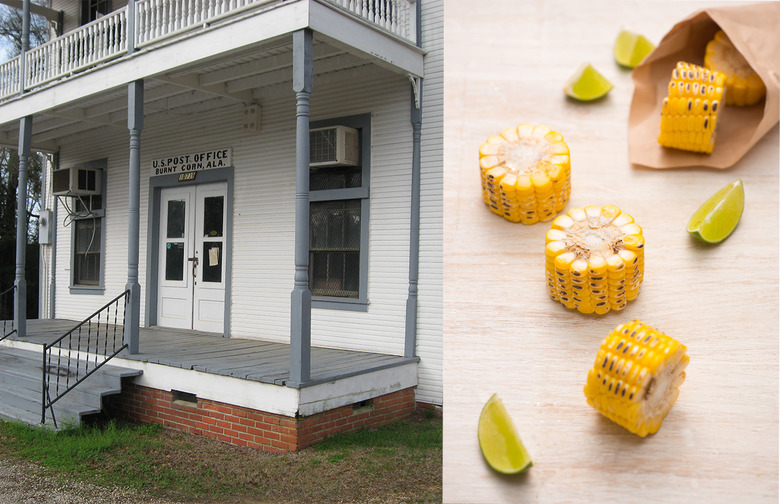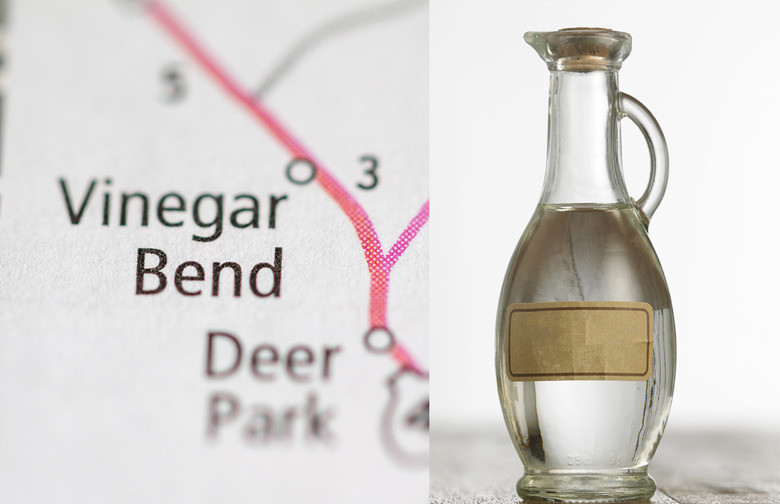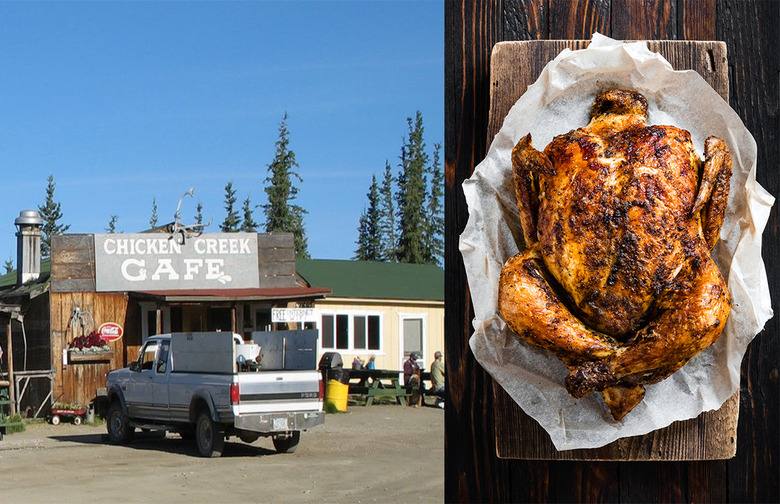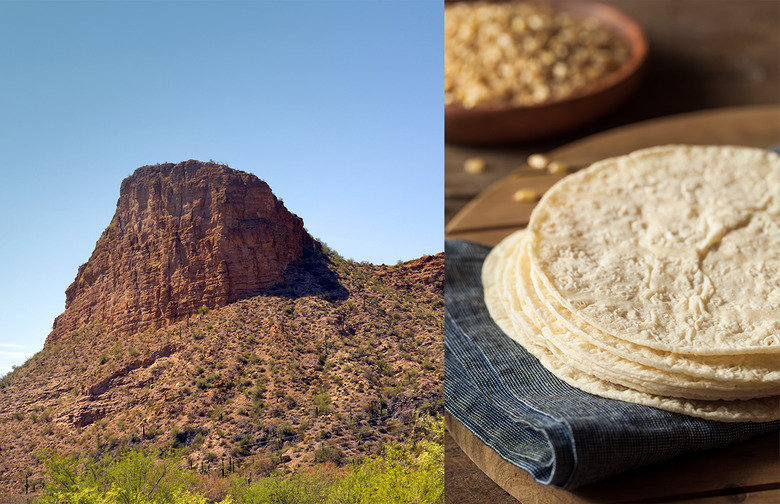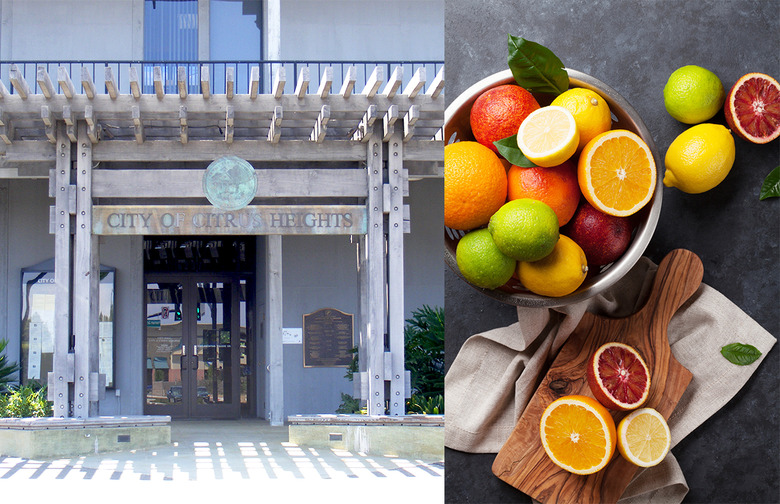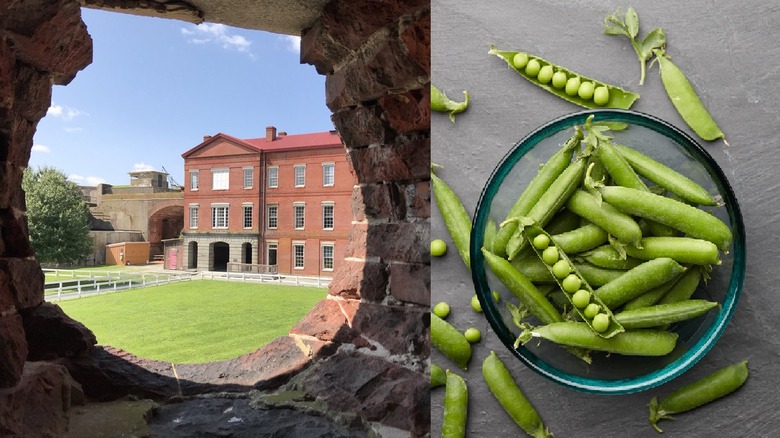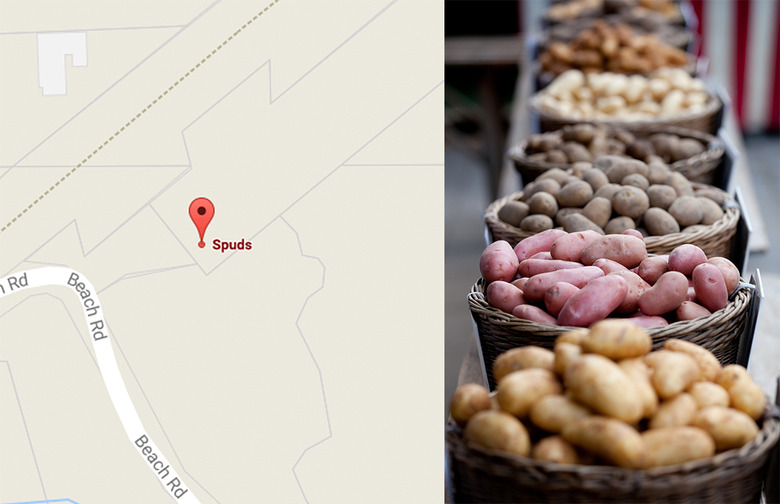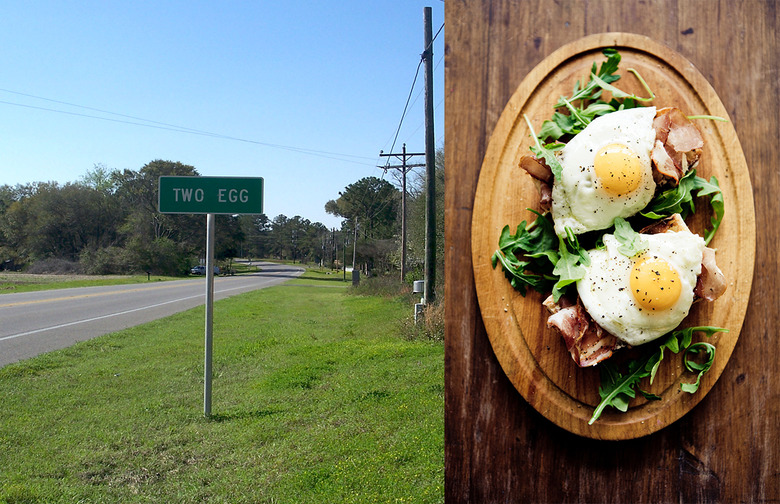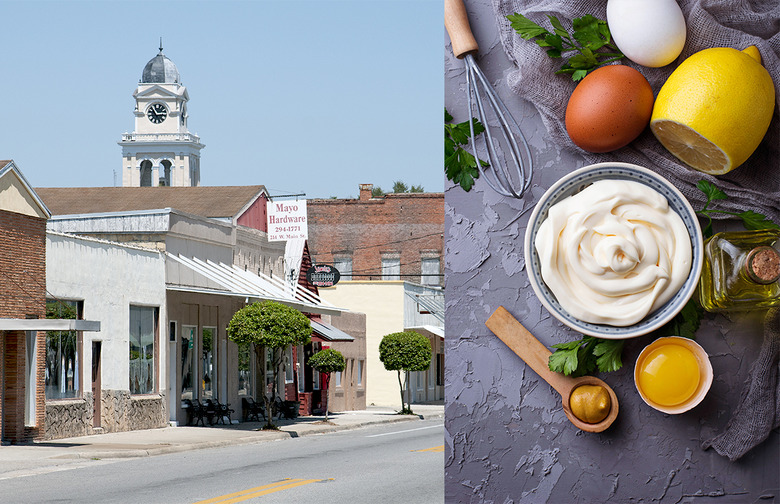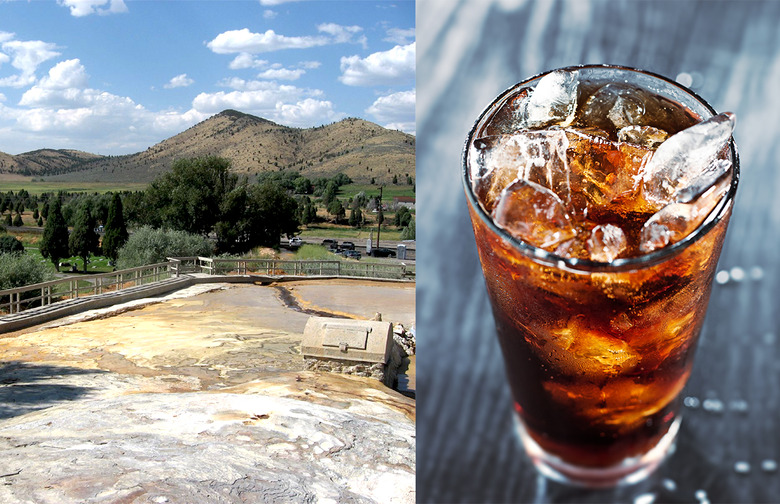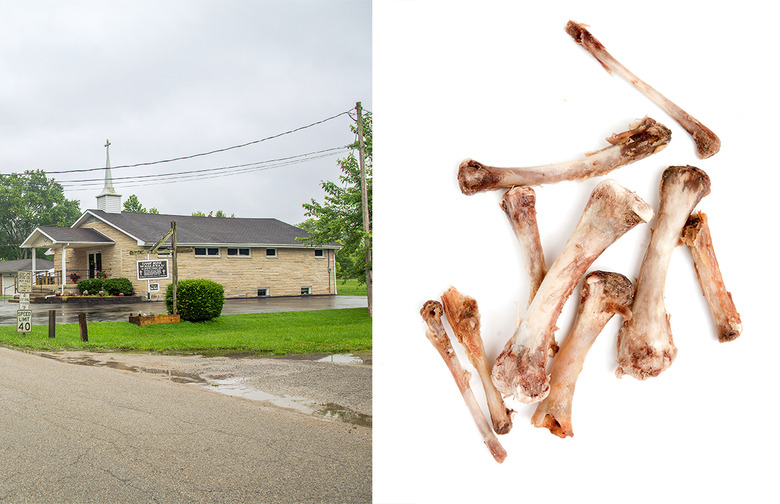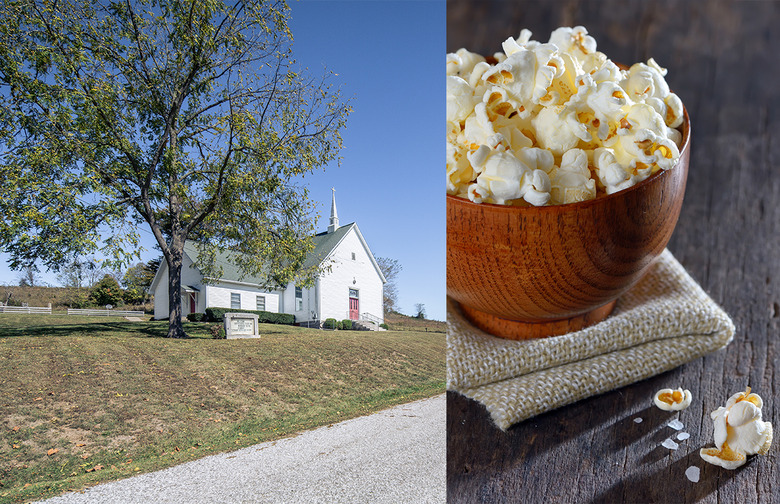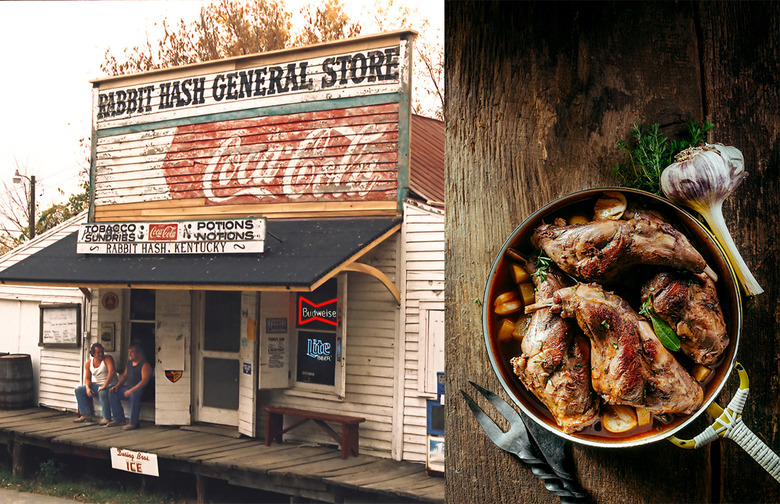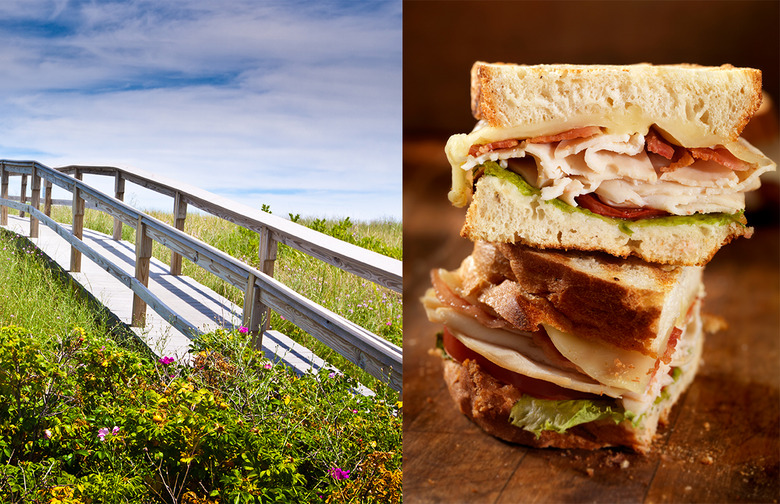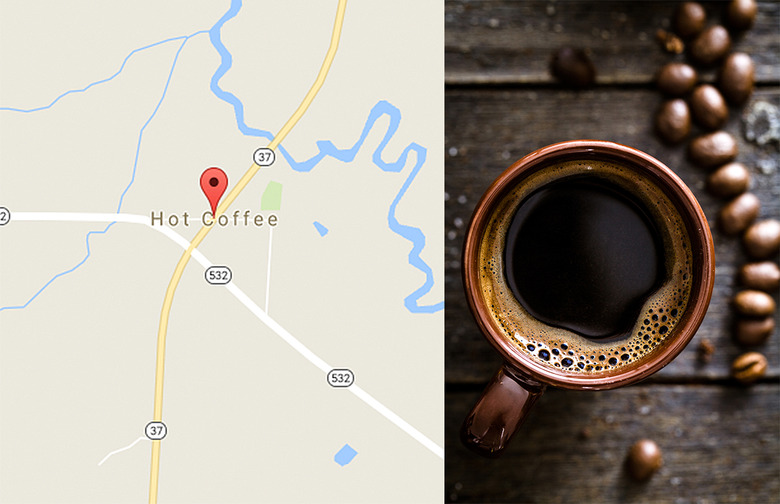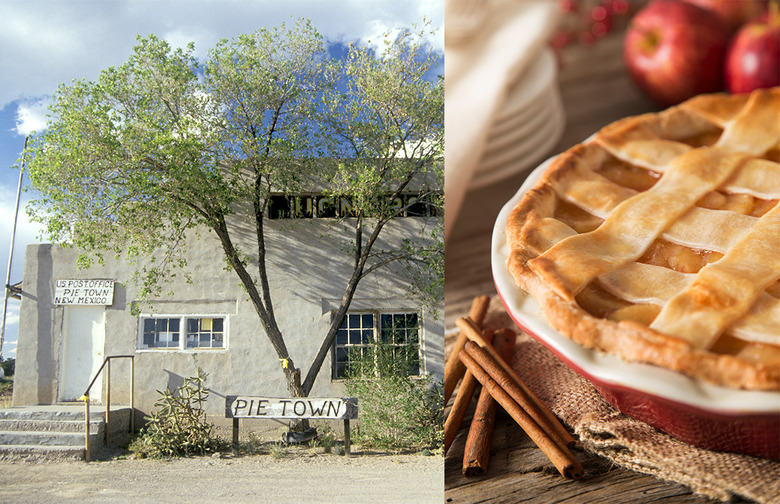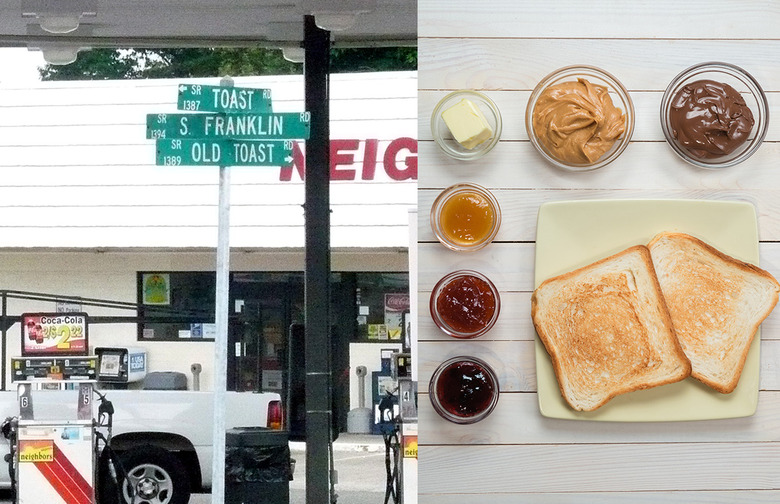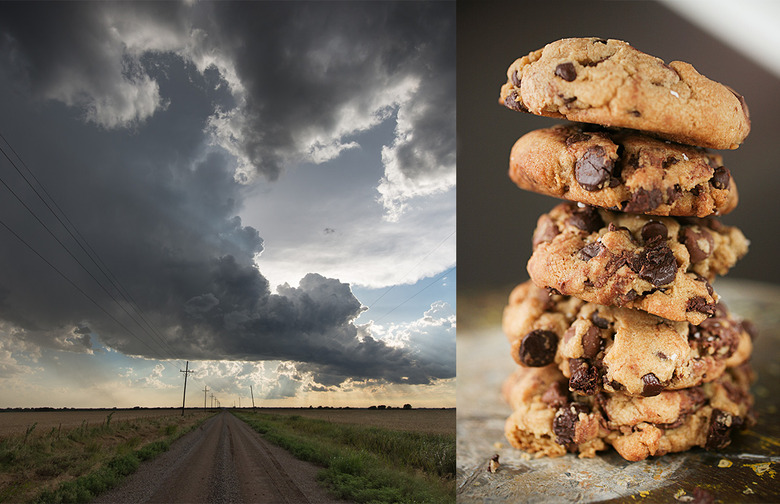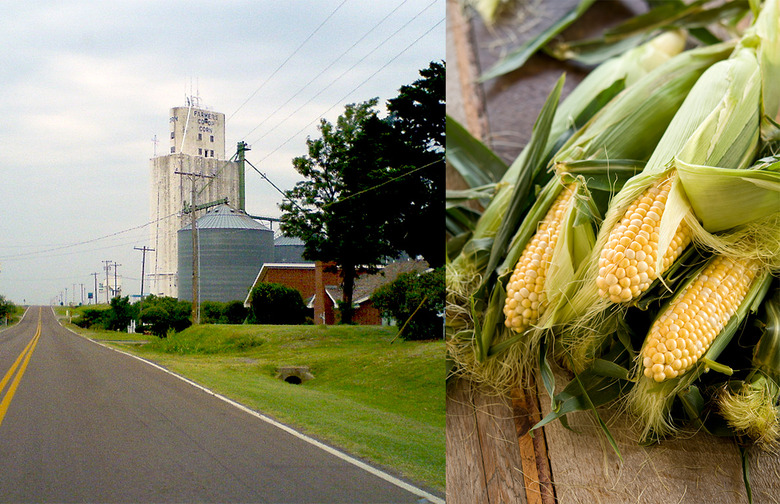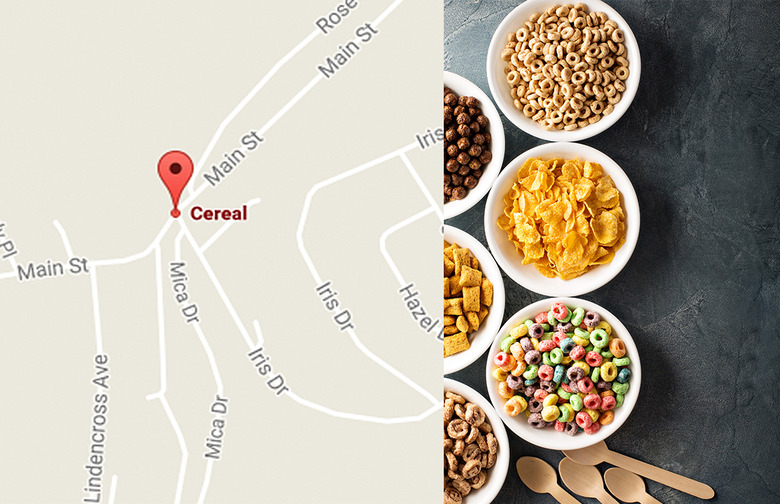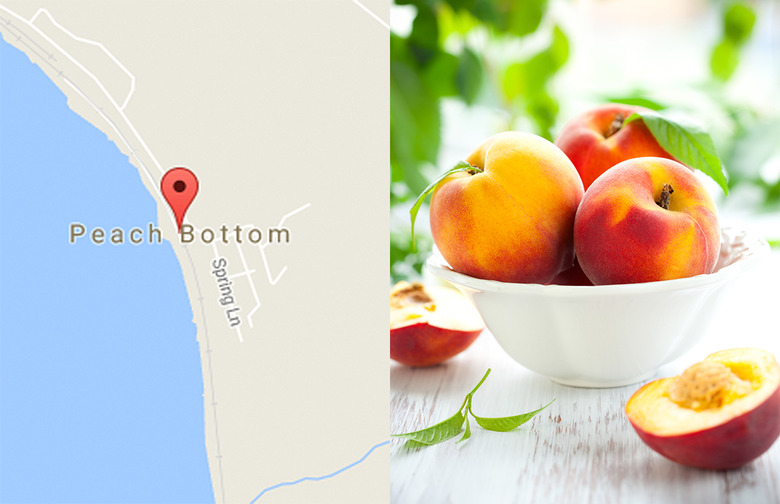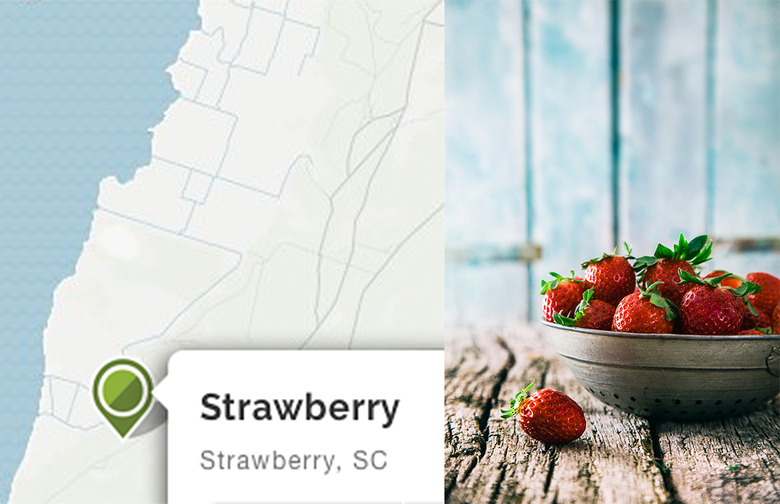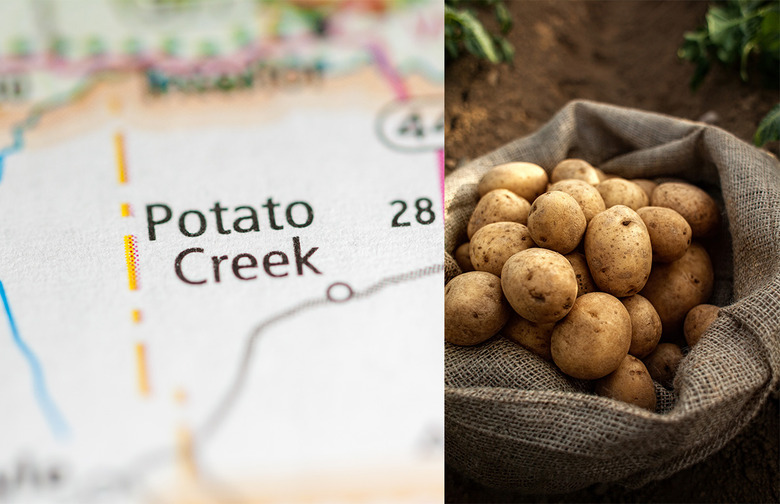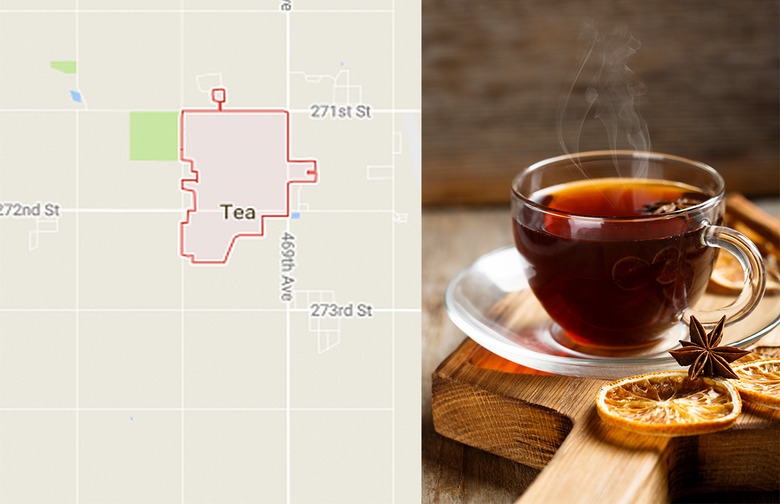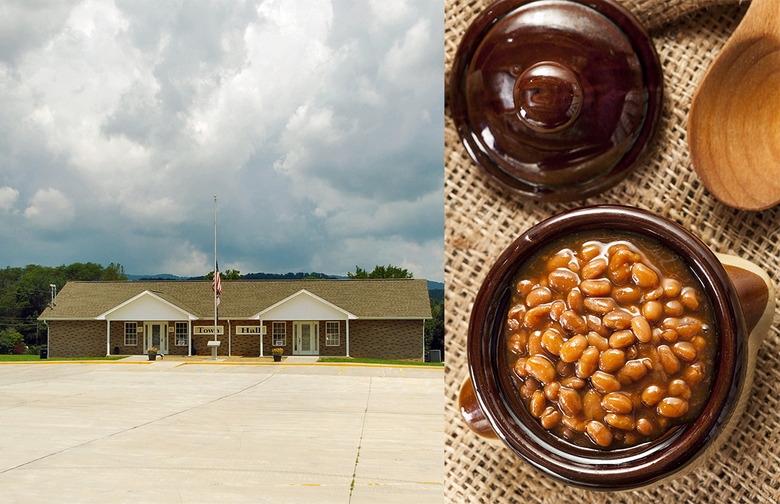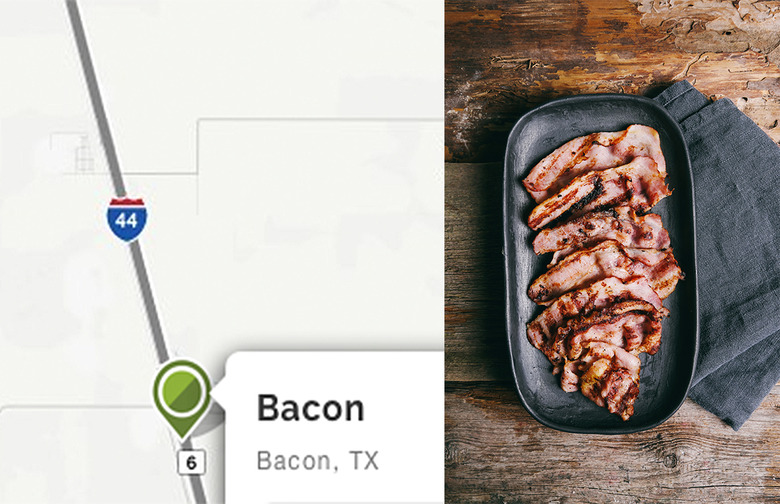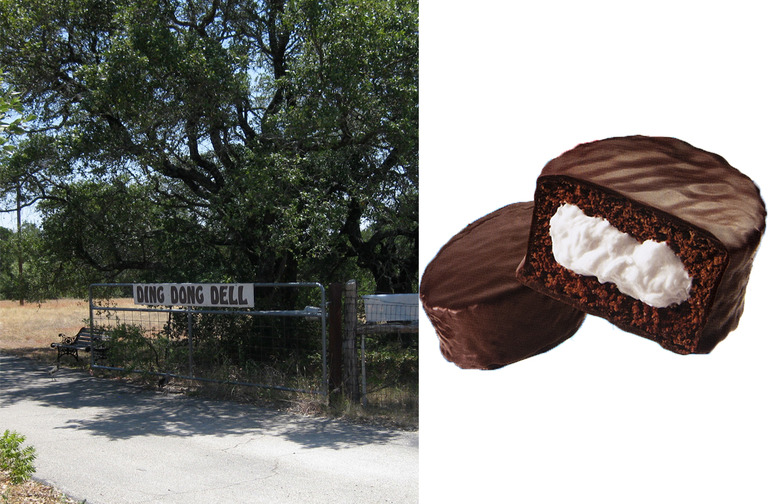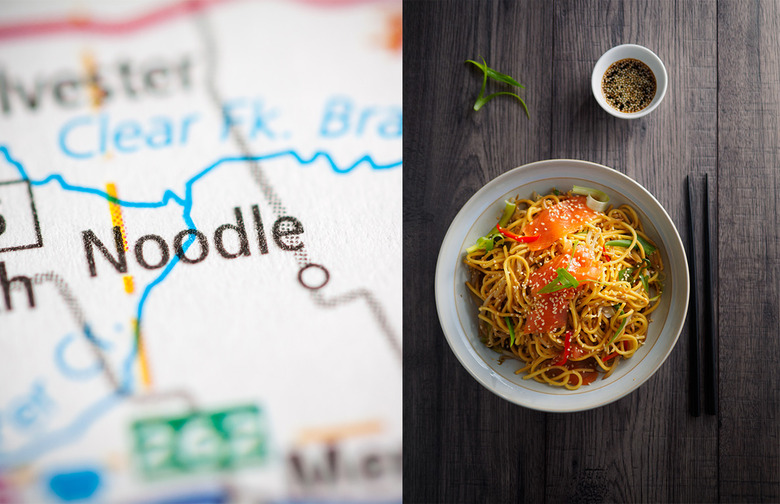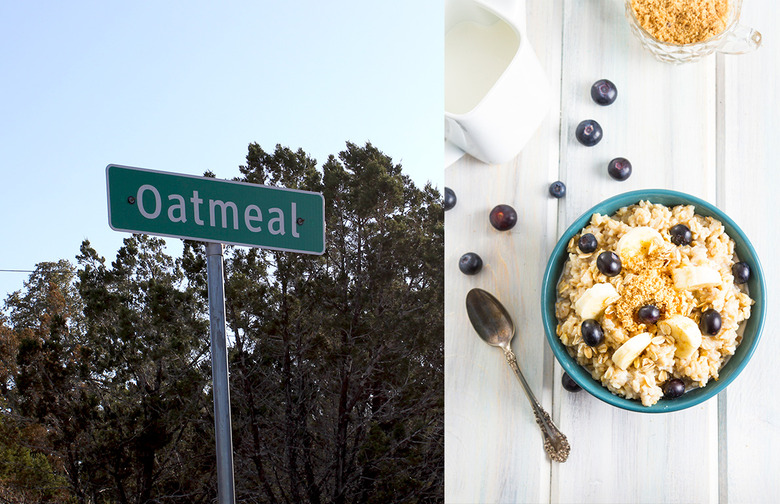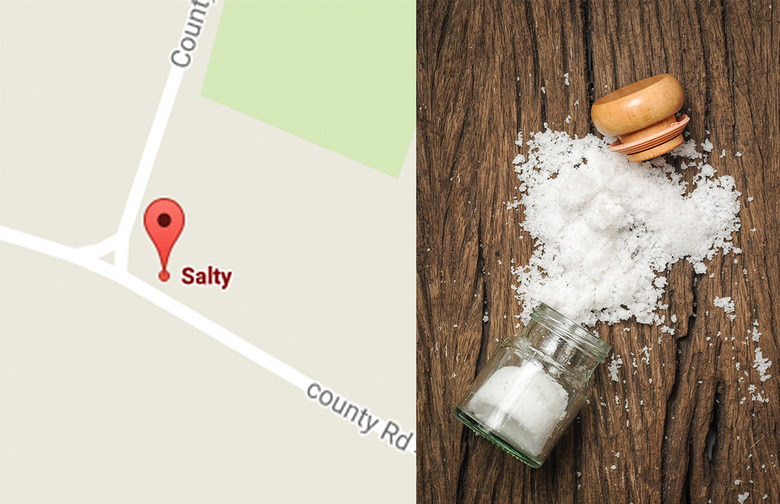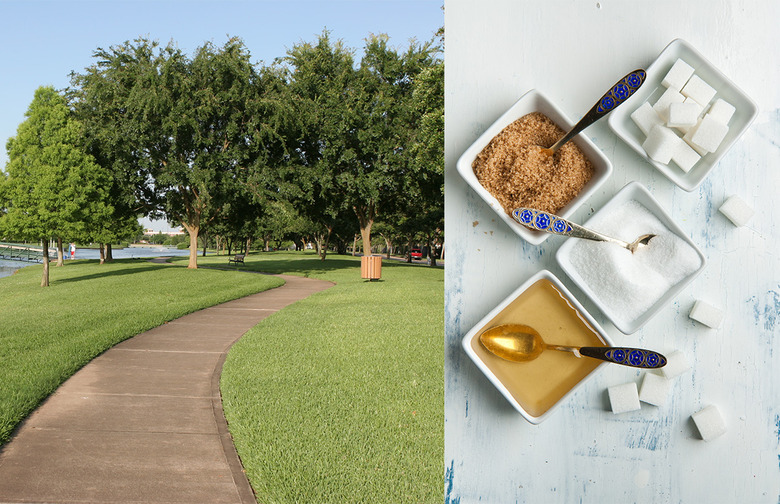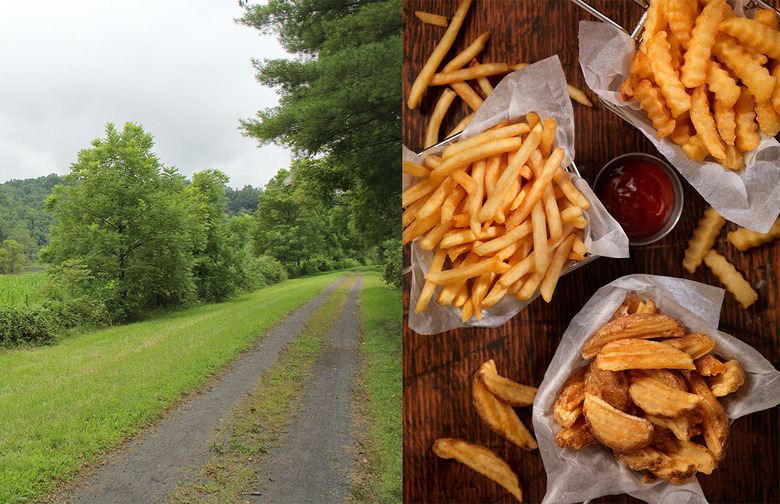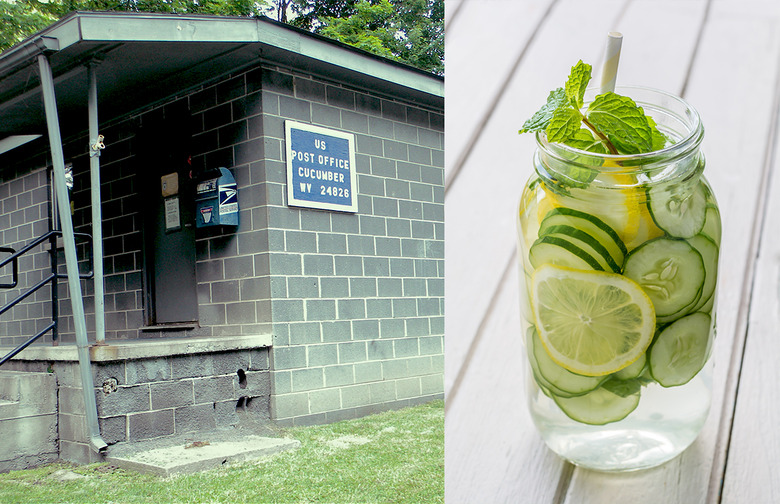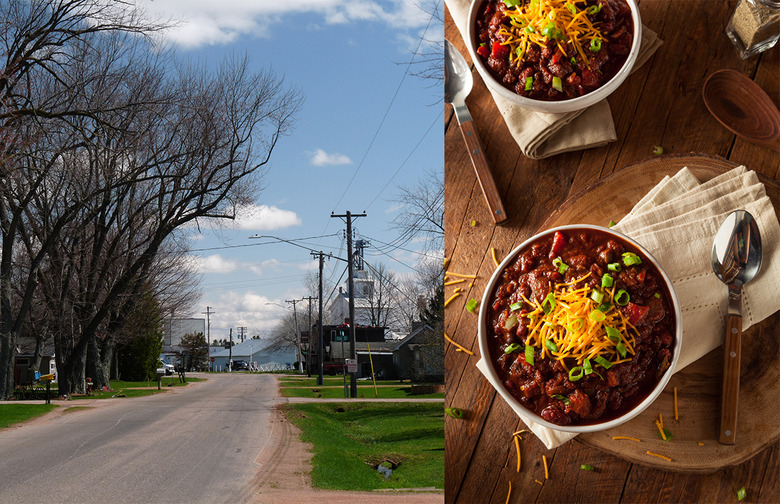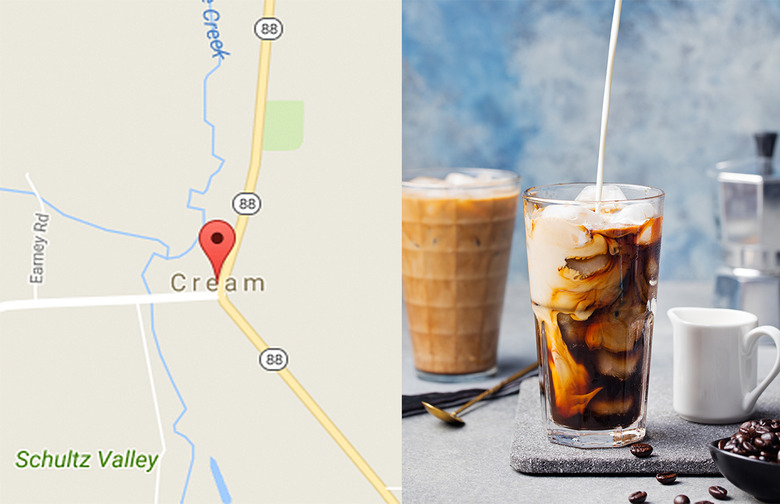35 American Towns And Cities Named For Food Slideshow
American towns earn their names in all sorts of ways. Some are fairly straightforward, named for a founder, local rock formation, or historical event. Some have origins so bizarre or obscure that it's hard to separate history from local legend.
Since we are about all things food and drink at The Daily Meal, we wanted to honor those places that have used food as inspiration in the naming process for their towns.
We scoured old maps, documents, and the internet, searching for towns with the quirkiest food names across the country. The stories behind these towns are unique and surprising and might in some cases incite a little stomach-grumbling.
Do you love everything breakfast? Start your day in Two Egg, Florida, or Toast, North Carolina. Swing by Sandwich, Massachusetts for lunch, and drive through Chicken, Alaska, with a side of Fries, Virginia, for dinner. Don't forget to finish the day in Popcorn, Indiana, or Pie Town, New Mexico! (You can hit Tea, South Dakota, if you're having trouble sleeping later.)
The residents of Lick Skillet, Tennessee, Pig, Kentucky, and Nibley, Utah might want to take a few notes for future road trips.
Loosen your belt and enjoy our list of appetite-inducing American towns — delicious destinations that should be mandatory travel for all eating enthusiasts.
And after all that, if you're still hungry for more, check out the best pizza, sandwich, soup and steakhouse in every state. Because there's always room for seconds.
Burnt Corn, Alabama
Legends vary about how this unincorporated community received its name. Some families say it was named by white settlers for the piles of toasted corn left by Creek Native American bands traveling through the area. Other stories say the name came from the scorched-earth practices employed during the Creek War of 1813-1814, which began between warring Creek factions but grew to involve militia forces from the young United States as well as several other tribes.
VinegarBend, Alabama
That's not a typo, the name really has no space and does indeed have two capital letters. No one's really quite sure how the town received its name, but some say a vinegar bottle exploded at the freight station located near a bend in the local river. Once a bustling township, VinegarBend now lays claim to being the birthplace of Wilmer David "Vinegar Bend" Mizell, a major league baseball pitcher. He later served three terms as a Republican congressman from North Carolina between 1969 and 1975 and went on to work in the Reagan and George H. W. Bush administrations. Vinegar is not only useful as part of a town name, there are lots of other things it can do, like freshen wilted vegetables. Now that's one multi-tasking condiment.
Chicken, Alaska
Alaska's state bird is the ptarmigan, which some say bears resemblance to the chicken. Miners in search of gold in the late 1800s kept themselves alive on this tasty bird, which was abundant in the area. In 1902, the time came to incorporate the town and decide on a name. First up was "Ptarmigan" (complete with quotation marks), but not wanting to be ridiculed, locals decided upon the more humble Ptarmigan. However, no one could agree upon the spelling, so Chicken it was.
Tortilla Flat, Arizona
With a population of 6, Tortilla Flat — "the town too tough to die" — is the last remaining authentic stagecoach stop on the Apache Trail. A letter dated from 1939 says the area was christened "Tortilla Flat" after Tonto Basin pioneer John Cline and a few friends were stranded in the flat by a flash flood, and when they ran out of food, used their remaining flour to make tortillas and survive. Other stories say it was named for a nearby tortilla-shaped butte. Speaking of tortillas, we recently found the spiciest tortilla chip on the market, and it's really hot.
Citrus Heights, California
Bustling Citrus Heights has a population of 83,301, and its earliest known settlement was used as a stop-over on the transportation route to the gold fields in the 1800s. In the 1900s the lands surrounding the Sacramento area became known as part of the "fruit colonies," an idea popularized by land developers throughout the state of California. According to Citrus Heights historical documents, the fruit colonies were "based on the intensive subdivision of land, usually into six-to ten acre parcels, which was then heavily marketed as ideal for small-scale fruit farming, particularly of citrus and other Mediterranean crops, such as olives and figs."
Pea Patch Island, Delaware
Legend has it that a heavily laden ship sank in the shallows of the Delaware River, spilling its cargo of peas. This led to the peas sprouting, catching silt, and growing wild, eventually transforming this little mud flat into an island. Fort Delaware was built on the little spit of land in 1814, and housed Confederate prisoners during the Civil War. Locals say you can still hear ghosts tapping on the roof and under the floors... perhaps hungry for peas?
Spuds, Florida
Not surprisingly, this area is dependent economically on agriculture, most notably potato-growing, although they are also known for gladiolus flowers. Spuds is located 50 miles south of Jacksonville, Florida, and was once a stop on the Florida East Coast Railway, back in the day when people found Spuds a peeling...
Two Egg, Florida
This proud little town earned its name during the Great Depression, when many of its citizens faced unemployment and malnutrition and relied on bartering to be able to attain food items. Two boys came into the local store so often to exchange two eggs for a cup of sugar that regulars started calling it a "two egg store." Traveling salesmen heard this and began spreading the name to neighboring towns. According to Two Egg's website, this "story may seem light-hearted on the surface, but at a deeper level it reflects an effort to put a good face on very hard times." Two Egg even has its own ghost (the Ghost of Bellamy Bridge), and is also the childhood home of Oscar-winning actress Faye Dunaway.
Mayo, Florida
Mayo is the county seat of Lafayette County, and local area attractions include paddling down the Suwannee River and walking across the natural limestone bridge at nearby Lafayette Blue Springs State Park. Since the whole town is only .81 square miles, they mayo not have much room for visitors.
Soda Springs, Idaho
There are hundreds of naturally carbonated springs surrounding this city, which was known in the pioneer days as the "Oregon Trail Oasis." The famous Soda Springs Geyser is located here; it was discovered in 1934 by townspeople who were drilling in the area, looking to create a "hot pool" bathing attraction. They accidentally drilled into a chamber of pressurized carbon dioxide, releasing a massive geyser that ran for a week and flooded the downtown area. These days, the Soda Springs Geyser has been tapped and is released every hour on the hour as a tourist attraction, and remains as powerful as it was in the 1930s. Carbon dioxide is also the secret behind what makes Pop Rocks pop. Here are eight other junk food mysteries solved.
Gnaw Bone, Indiana
There are many theories behind Gnaw Bone's name, but the most popular seems to revolve around the commemoration of the hardships its people suffered during the Great Depression: A musician traveling through the area commented that he had no idea how people were staying alive "without any more than a bone to gnaw." This soon became a common phrase used by locals to describe poverty, and eventually a term for an impoverished area.
Popcorn, Indiana
In Popcorn, Indiana, the Popcorn, Indiana Company grows heirloom (surprise!) popcorn in hormone- and GMO-free soil. The town has a population of 42, and the story goes that it was originally named after nearby Popcorn Creek. In case you're wondering which came first (the popcorn or the place?), the company's website solves the mystery: "Both. Popcorn gave its name to the town. The town, in turn, then gave its name to our brand of popcorn."
Rabbit Hash, Kentucky
The town was originally settled by local famers in the nineteenth century who banded together to build a general store on the banks of the Ohio River. After a winter flood in 1847 ruined most economic prospects, the townspeople lamented the delicious dishes they wouldn't be able to enjoy for the Christmas holiday. A local jokester took a look at the flood and said he thought there'd be plenty of rabbit hash to enjoy. The term first became that man's nickname, but wound up attaching itself to the town over time. But Rabbit Hash's wacky claim to fame doesn't stop there: It's also famous for its string of canine mayors. The most recent voted into office? The lovely Brynneth Pawltro, a 3-year-old pit bull. She's known around town by her friends as simply Brynn, however.
Sandwich, Massachusetts
The oldest town on Cape Cod (it turns 378 this year) is full of beautifully preserved homes, such as the Benjamin Holway House, whose property hosts an old homestead structure built way back in 1698. Perhaps we should add this lovely little town to our list of 20 life changing sandwiches you've never heard of?
Hot Coffee, Mississippi
This town grew up on the road from Natchez, Mississippi, to Mobile, Alabama, a well-traveled route in the 1800s. An inn and store was built in 1870 by a gentleman named L.J. Davis, who hung a coffee pot over the door advertising "the best hot coffee around." Davis' famous coffee helped steel travelers who had "bean" on the road for days, and eventually it led to the community's name.
Pie Town, New Mexico
Life can be as easy as (not cake) in this little town that sits astride the Continental Divide in remote west-central New Mexico. There are no stoplights, but the Pie Town Café serves a mean New Mexican Apple Pie that's made with green chiles and piñon nuts. In the 1920s a settler began selling supplies and snacks, notably pies, to hungry travelers and the name stuck. If you can't make it to Pie Town, bring Pie Town to you by making one of these 11 apple pie recipes better than Mom's.
Toast, North Carolina
Residents of Toast, North Carolina, insist their unusual town name actually has nothing to do with food. When trying to come up with a name for their rising town in the 1920s, local residents were plagued with difficulty. They weren't allowed their first choice, Franklin, because it was already taken by another town. No one could come up with a good second or third choice, and residents began squabbling. An impromptu decision was made when one gentleman spotted an old shoebox. The color of the shoes inside was labeled "Toast," and according to local legend, the man said, "What the hell, let's just call it Toast!" and so they did.
Cookietown, Oklahoma
Cookietown is in southern Oklahoma, near the Red River. The story behind its name? Marvin Cornelius named his general store "Cookietown, USA" in 1928 in order to gain more nationwide attention. He was known for handing out cookies to all children who stopped by, and they were often heard saying how they "didn't want to leave Cookietown." The name stuck around. Does Cookietown have your stomach grumbling? Check out our recipe for the best chocolate chip cookie in the world.
Corn, Oklahoma
Originally called "Korn," this town was settled by German-speaking Russian Mennonites in the 1890s. The townspeople changed its name to "Corn" in 1918, due to anti-German sentiment surrounding World War I. Corn lays claim to being the first town where a live tornado was ever filmed in the United States. Resident Jon Gossen captured it with his home movie camera when the tornado hit in 1951.
Cereal, Pennsylvania
Cereal, Pennsylvania came to be after the Jersey Cereal Food Company set up shop in a three-story brick building in 1903, in an area that was formerly farmland. The Jersey Cereal Food Company went on to manufacture a cereal called "Jersey Flake," and led the industry in the manufacture of corn and wheat flakes.
Peach Bottom, Pennsylvania
Peach Bottom lies on the Mason-Dixon line, close to Pennsylvania's southern border with Maryland, and on the eastern banks of the Susquehanna River. The original town was built across the river, until the Conowingo Dam was built, which ended up submerging the original town. The Peach Bottom Nuclear Generating Station is near the current town's location. Locals speculate the name "Peach Bottom" originates from the American redwood (or "Judas") trees whose blossoms blanket the hillsides in the spring time, resembling peach orchards.
Strawberry, South Carolina
Named after a nearby plantation, Strawberry lies in Berkeley County, just outside Charleston. The Strawberry Plantation is believed to date back to 1677, and once housed a racetrack for thoroughbred horses.
Potato Creek, South Dakota
This little town's most famous resident was "Potato Creek Johnny," a prospector who eventually made his way to Deadwood, the lawless town made infamous during the Black Hills gold rush days in the 1920s. He's credited with discovering one of the largest gold nuggets in the world, which measured over four inches long and was said to resemble the shape of a woman's leg.
Tea, South Dakota
Residents decided it was "time for tea" in 1902 when the town was incorporated. It is believed the name has no particular significance, but was simply chosen because it was short and sweet. Olympic pole vaulter and bronze medalist Derek Miles hails from Tea.
Bean Station, Tennessee
Established in 1780, this frontier outpost was an important stopover for longhunters and travelers because it was on the intersection of the Old Stage Road and the Great Wilderness Road. It was named for William Bean, a pioneer and associate of early American frontiersman and folk hero Daniel Boone.
Bacon, Texas
The city of Bacon can be found within the larger city of Wichita Falls, near the Texas-Oklahoma border. Local residents like to pig out on Polish sausage sandwiches and foot long corn dogs at the Texas Oklahoma Fair every September. State fairs are renowned for their insane culinary creations (fried butter, anyone?), and here are some of the all-time craziest.
Ding Dong, Texas
Ding Dong is located on the Lampass River in central Texas, and was founded in the 1930s by brothers Burt and Zulis Bell, who ran a country store. An artist whom they had hired to paint a sign for their store decided to take creative license with his task. He painted two bells, representing Burt and Zulis, and beneath them he painted the words "Ding" and "Dong." Residents seemed to agree.
Noodle, Texas
Noodle is named for nearby Noodle Creek. Noodle is the local term for "nothing," and the name signifies a dry creek bed. Settlers began arriving in the 1880s, coming for the cheap land, which could be bought for $5 an acre. They definitely used their noodles on that deal.
Oatmeal, Texas
Start your day off right in this little community 56 miles northwest of Austin. It was established in 1840 by German settlers, and the name is said to be either a variation of the name of the first gristmill owner (Mr. Othneil), or possibly a translation of the name Habermill (haber is a German dialect version of hafer, which means "oats"). Today, people drive from all over the state for the Oatmeal Festival, which occurs the weekend before Labor Day.
Salty, Texas
Life is sweet down in Salty, Texas, which was named for nearby Salty Creek. The community was settled in 1860, and became a voting precinct in 1886. The annual Salty Singing Convention was founded around 1900 by Andrew J. Jackson, who wrote religious songs, composed poems, and fathered 13 children. Do you think having all those kids made him a bit salty from time to time? Na.
Sugar Land, Texas
Sugar Land was founded as a sugar plantation in the mid-1800s, and was incorporated as a city in 1959. It is the headquarters of Imperial Sugar, a major U.S. sugar producer, and the corporate home of multiple leading companies, including Minute Maid and Aetna.
Fries, Virginia
"The friendliest little town in Virginia" is named after cotton mill owner Colonel Francis Henry Fries. Fries (pronounced "freeze") began as a tiny mill town in the Blue Ridge Mountains, and is now popular for its outdoor activities, such as kayaking, rock climbing, and inner-tubing on the New River. The Appalachian region is legendary for bluegrass music, and the Blue Ridge Music Center is just a short drive away from Fries, at mile post 213 on the Blue Ridge Parkway. If you're planning a road trip anytime soon, here are some tips for staying healthy on the road.
Cucumber, West Virginia
If you ever find yourself in a pickle, visit Cucumber, West Virginia. This small coal-mining community is located deep in the Cumberland Mountain region of the Appalachians. It gets its name from nearby Cucumber Creek, or possibly from the abundance of cucumber trees in the area. "Cucumber tree" is the common name for Magnolia acuminate, one of the largest and cold-hardiest of all the magnolias. We're not gherkin you around, either.
Chili, Wisconsin
Chili has bean around for a while, with a post office in operation since 1892. Though it's spelled differently, Chili is named after the South American country Chile. Stop by nearby Chili Corners Bar and Grill for the Friday night fish fry, a local favorite.
Cream, Wisconsin
It's only appropriate that America's Dairyland name one of their towns after this decadent, full-fat product. Cream is located in western Wisconsin, not far from Minnesota and the Mississippi River. The local Ponderosa Bar is known for its fast service, bar games, and quiet atmosphere, and residents say it's the best. Considering it's the only bar, it butter be. Has all this talk of food towns got you hungry? Find something delicious to cook up on our Best Recipes page at The Daily Meal.
